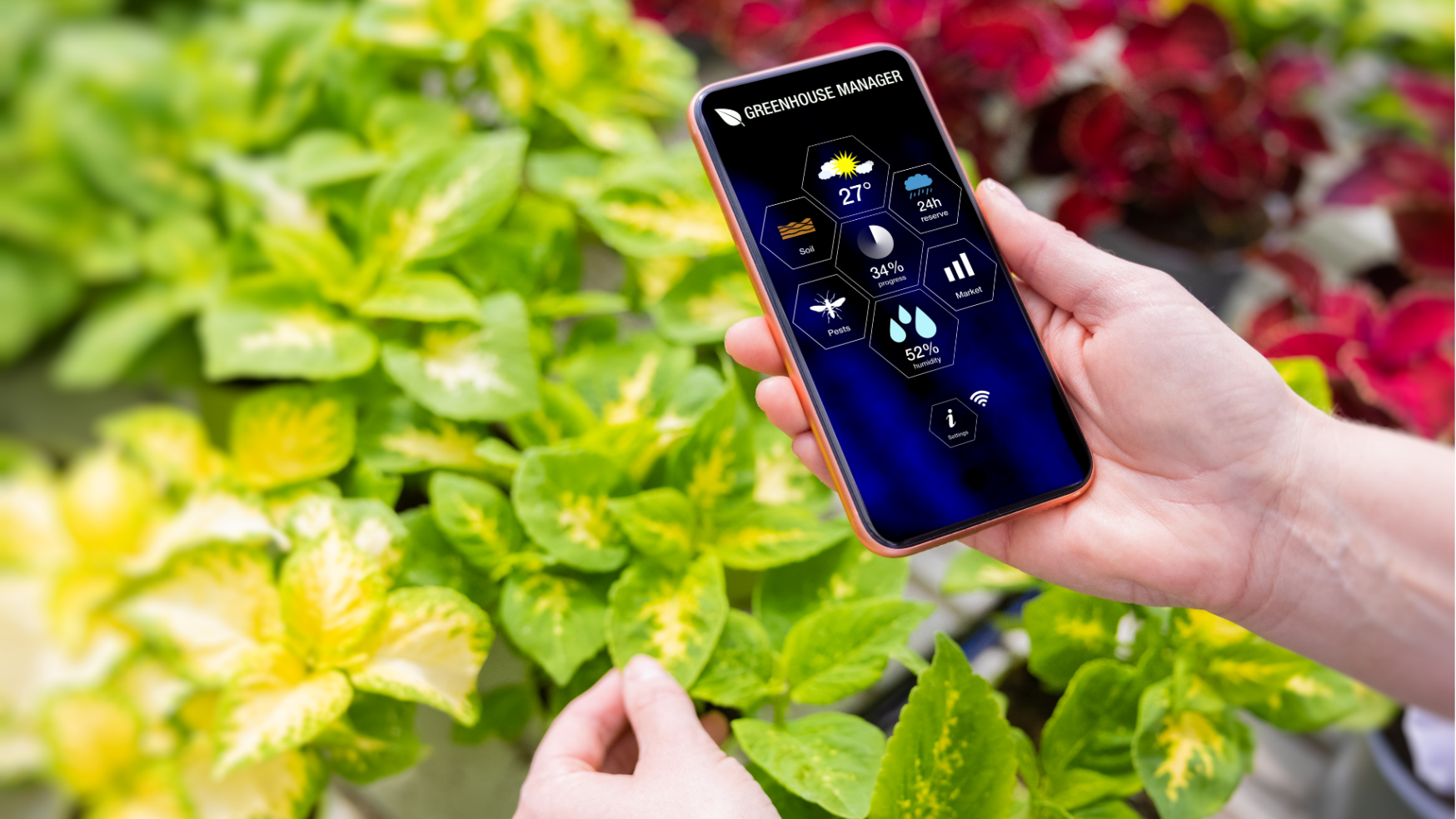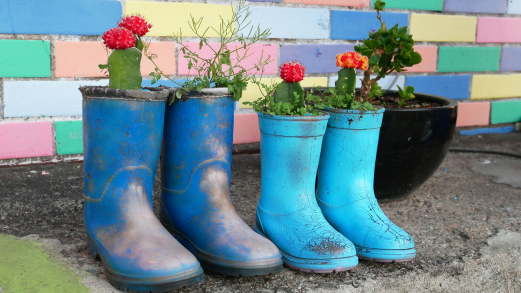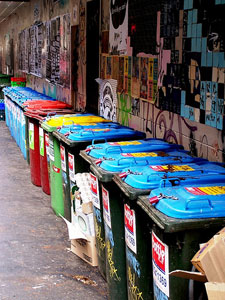
As I sit in my delightful home office and gaze longingly out the window at my little patch of suburbia in search of inspiration, I am greeted by the site of my wheelie bins. There they sit, all three of them, lined up like cheer leaders for three different coloured waste management teams! It occurs to me that these three bins are a bit like the three tenors, (or the three stooges) – everyone knows what two of them do, but people just can’t quite figure out what that third one is for. As I stare at these symbols of the suburbs, it dawns on me that, as a passionate industry professional, it is up to me to get to the bottom of the green waste bin, and explain the ins and outs to you, dear readers! It also dawns on me that I probably need to get out a bit more, but that’s another story for another time! Let’s have a look at our household green waste – what it is, where it goes, what becomes of it, and why it is really important that you do your bit!
Talking Rubbish – Green Waste Explained
My rubbish bins, apart from being excellent backyard cricket wickets and occasionally (and not to be recommended) makeshift ladders, serve a far greater purpose… they get rid of about 400kg of my domestic waste per year! If you think that’s excessive, you’re wrong… that’s the average! Every single Australian is responsible for about 400kg of household rubbish a year, with 180kg of this being comprised of potentially recyclable food and garden waste. It’s this stuff that we refer to as “green waste”, which is essentially putriscable (able to be broken down by micro-organisms) waste from our homes and gardens. Many Australian councils have dedicated green waste wheelie bins, and we need to use them! Green waste should NEVER be placed in the standard rubbish bin… that waste goes to landfill and that ain’t where we want our 180kgs of green waste to go!
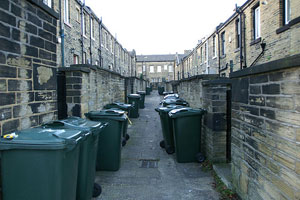
Yeah, I know what you’re saying… what difference does it make if my 180kgs of green waste ends up at the tip? While 180kgs seems fairly insignificant, if we look at our personal green waste in terms of greenhouse gas emissions, it becomes an important issue. Each kilogram of organic waste, assuming 50% is green waste and the other 50% is food waste, contains enough carbon to produce 0.17kg of methane. In a landfill situation, where this green waste is broken down anaerobically (without oxygen), approximately 50% of carbon may be converted to methane. Therefore, every one of us is responsible for the emission of 15.3kg of methane per annum . Both methane and carbon dioxide are greenhouse gases, however methane has Global Warming Potential of 21 times that of carbon dioxide. Essentially, our yearly 15.3kg of methane has a carbon dioxide equivalent of 321.3kg.
Almost half a tonne of carbon emissions, per person, per year, if we dispose of our organic waste in our normal bin instead of whacking it in the green bin, or composting it at home! That’s the emissions equivalent of driving a pretty ordinary 4WD from Sydney to Melbourne, or one passenger flying from Melbourne to Hobart! That should be reason enough to make the most of your council green waste bin but, if you still need convincing, read on!
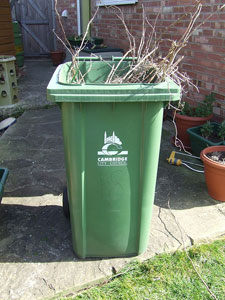
The Excellent Adventures of Green Waste
So, what exactly becomes of our dearly departed green waste, once we have popped it in the bin (or on the footpath, depending on your council)? Well, most green waste, after being collected, heads off to a custom designed, green waste processing facility, where it is sorted, often by hand, to remove rubbish and things that just don’t belong in the bins (more on that later). It is then passed through a massive grinder and laid out in rows (called windrows) where, generally, they are covered with a thermal material (this stops the stink, and helps regulate the temperature). These rows are then heated (maintained at around 55 degrees Celsius) for at least three days, but often much longer. This acts to kill any pathogens, pests and weed seed that may be present in the green waste.
This composted green waste is then passed through another cleaning process, where ferrous metals (like steel, iron based alloys and stainless steel) are removed by large magnets. The green waste is then graded according to size, with the largest pieces being sent back to the grinder! Essentially, this entire process leaves us with compost… made from your very own green waste! This compost is then sold back to landscapers, councils and even nurseries, where it is used and sold as a top notch soil improver, or, when mixed with gravels or sands, is sold as a soil blend. How good is that?
To Bin or Not To Bin
Seeing as though most of our green waste ends up back in the landscape or garden, it is vitally important that we know what can and cannot be whacked into the wheelie bin! Ever seen (or bought) some bulk compost, only to find bits of plastic, bottle lids and even cutlery through it? That’s because someone, somewhere has put the wrong thing into their green waste bin and, despite the pretty thorough screening and cleaning process the waste goes through, rubbish occasionally slips through and taints the entire load. If you think separating your rubbish into the right bins is tedious, consider the painful process of picking 1000 pieces of ground-up plastic bag from your garden! So, what can we safely put in our bins, and what needs to go elsewhere?
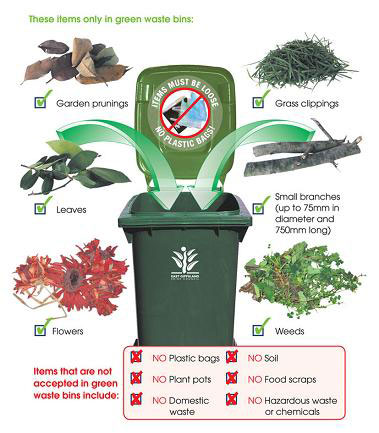
In The Bin
- Grass clippings and cuttings (weeds generally fine, check with your council)
- Small twigs and branches (no thicker than 15cm or longer than 60cm)
- Leaves (both fresh and dry)
- Flowers (from garden and spent fresh flowers)
- Prunings
Not In The Bin
- Plastic bags – do NOT wrap your green waste in any sort of plastic bag
- Food and kitchen scraps
- Soil and Potting Mix
- Rocks, stones and gravel
- Treated timber
- Stumps and branches thicker than 15cm in diameter and over 60cm in length
- Building materials and builders rubble
- Flower pots
- Paper, cardboard or similar
- General rubbish (including e-waste, chemicals, batteries and household garbage)
- Dead animals – you’d be surprised!
While this may all seem arbitrary and not all that important, we can assure you it is. Plastic bags, while being phased out across the country (and it’s about time) still continually find their way into green waste, costing waste management companies both money and time, not to mention the negative environmental impact caused by this stuff mixed through our compost. It’s time to get serious about household waste Australia… compost what you can, recycle all recyclables and use your green waste bin for good instead of evil!
If you need more information, or you don’t have a green waste bin (or collection service) contact your council and get them moving… your planet will thank you for it!
1. Total amount of Organic Waste Produced (p.p p.a) x Methane per Kilogram Organic Waste (0.17kg)
Related Articles:
Citizen Science: A Pathway to Gardening Success and Biodiversity Conservation
In recent years, the realm of science has experienced a remarkable transformation, one that invites people from all walks of life to participate…
A Sustainable Gardener’s Guide to Thrifty Gardening
Creating an eco-friendly and cost-effective garden involves more than just nurturing plants; it's about adopting a sustainable approach that…


